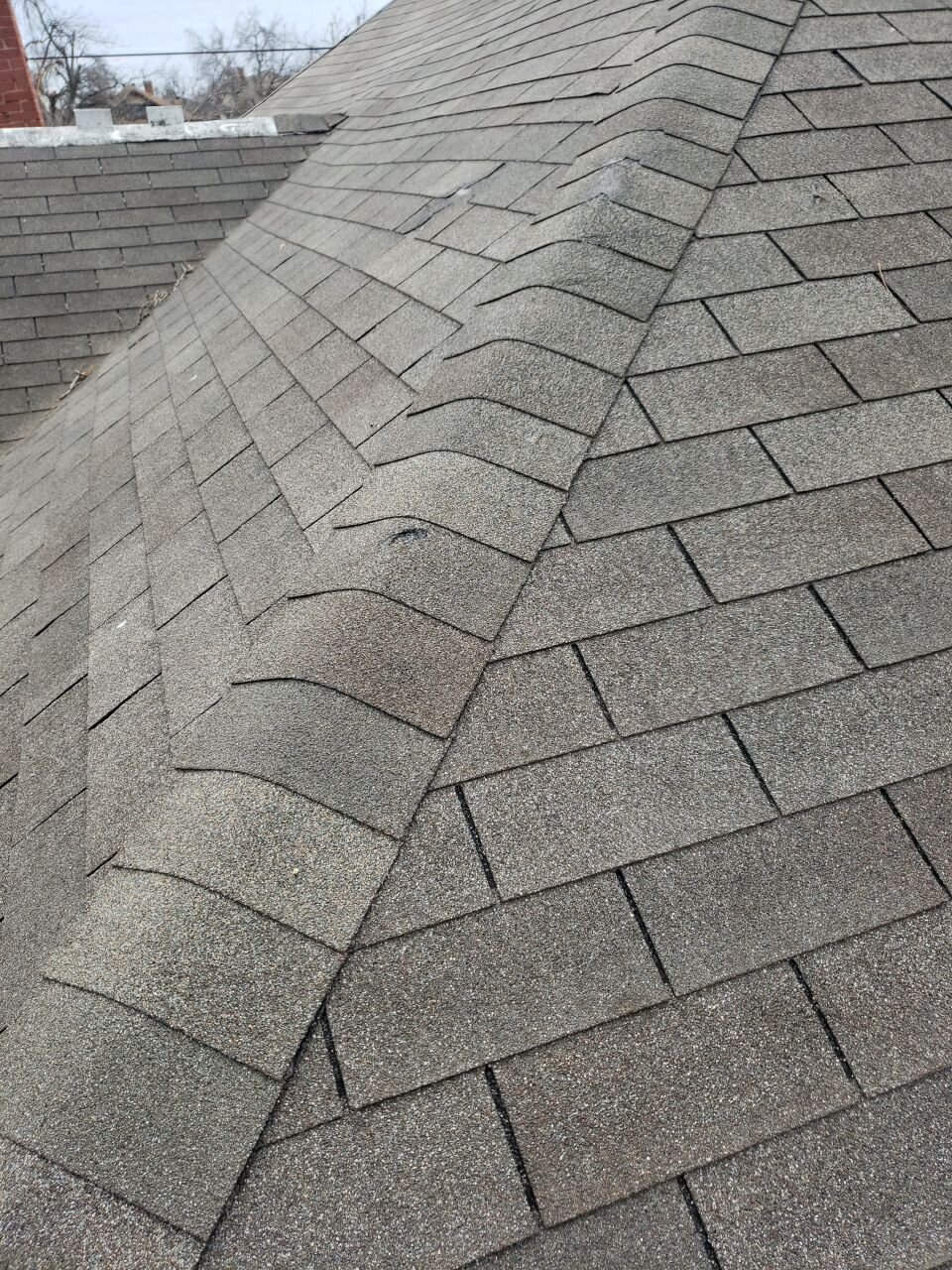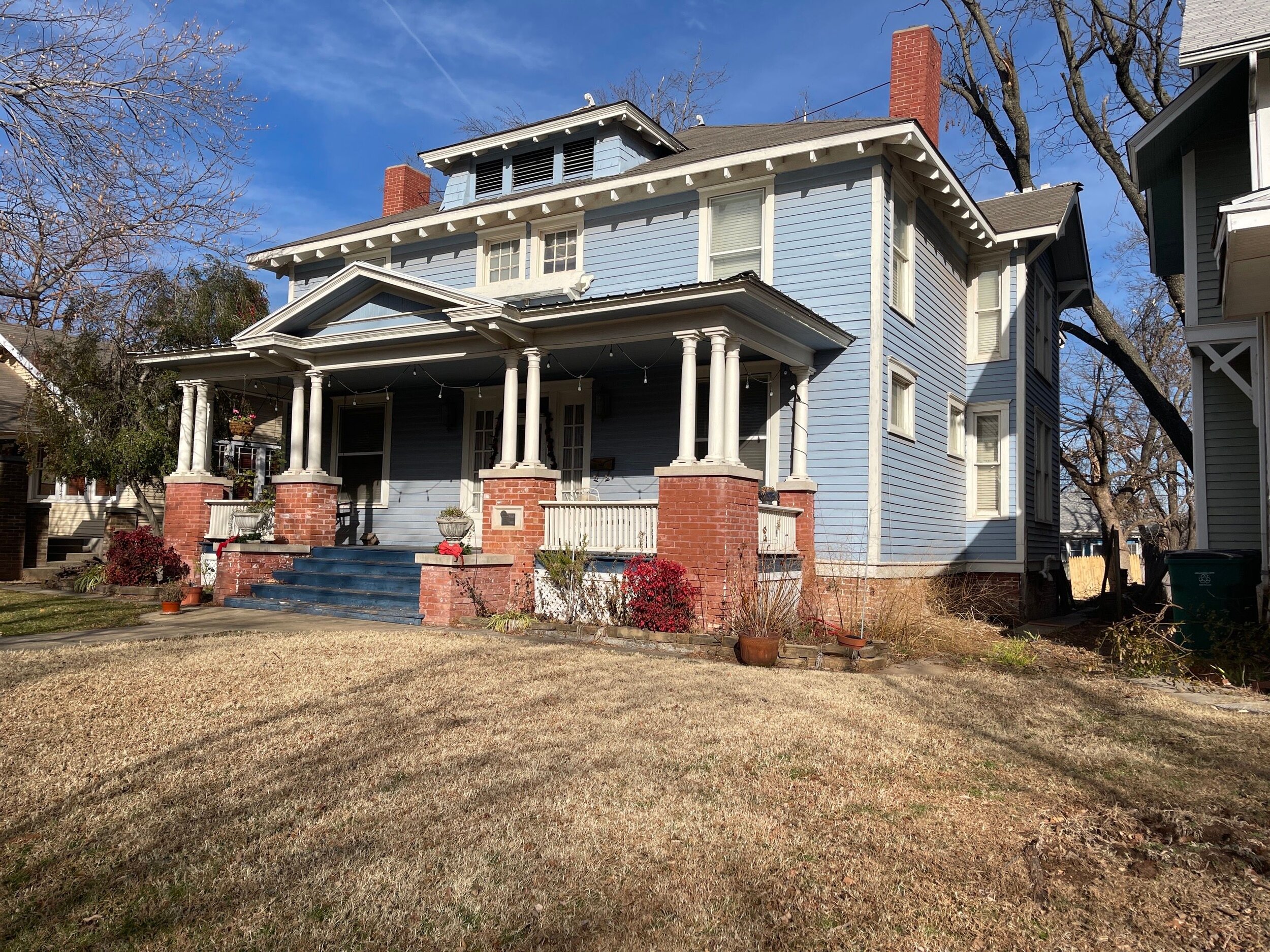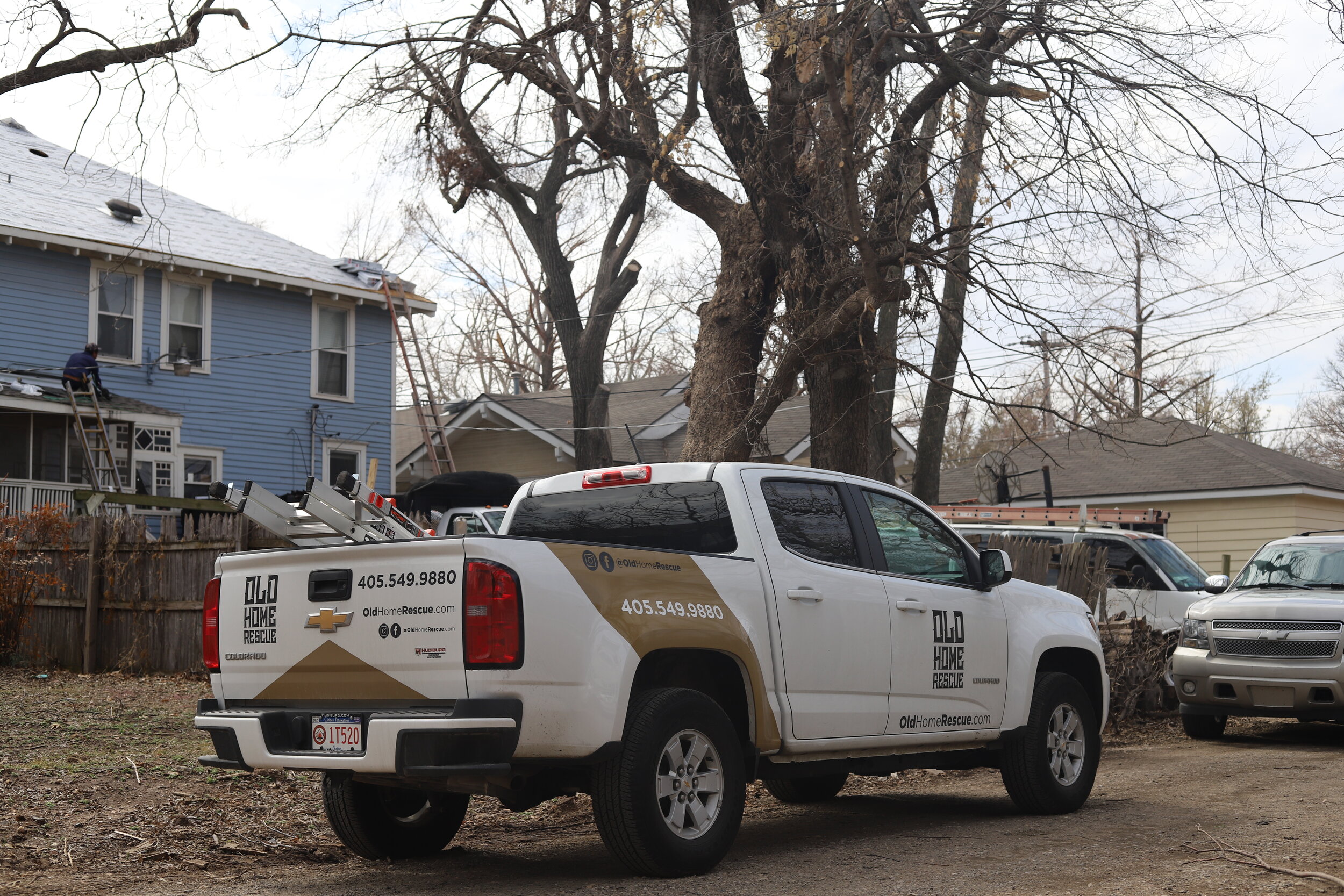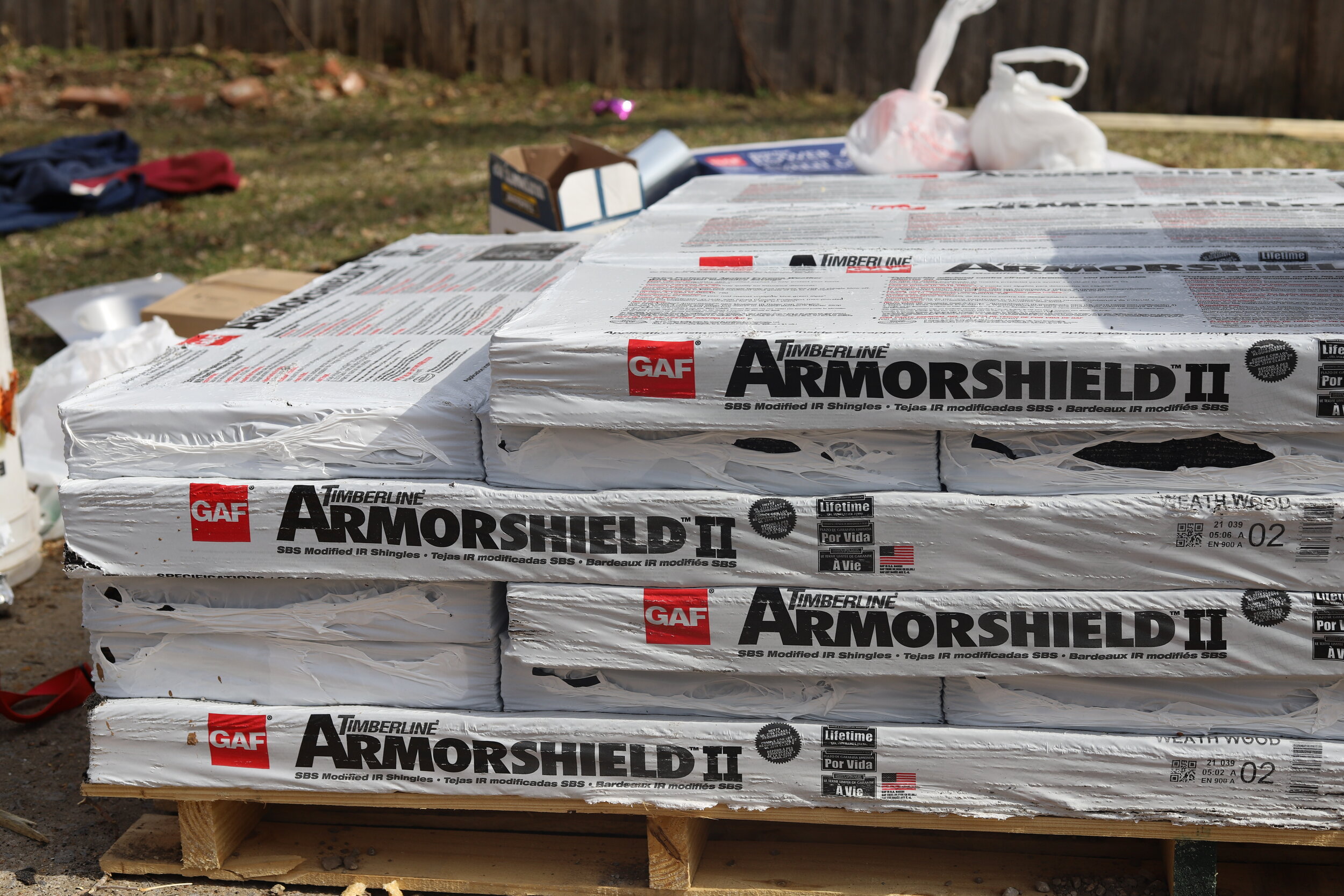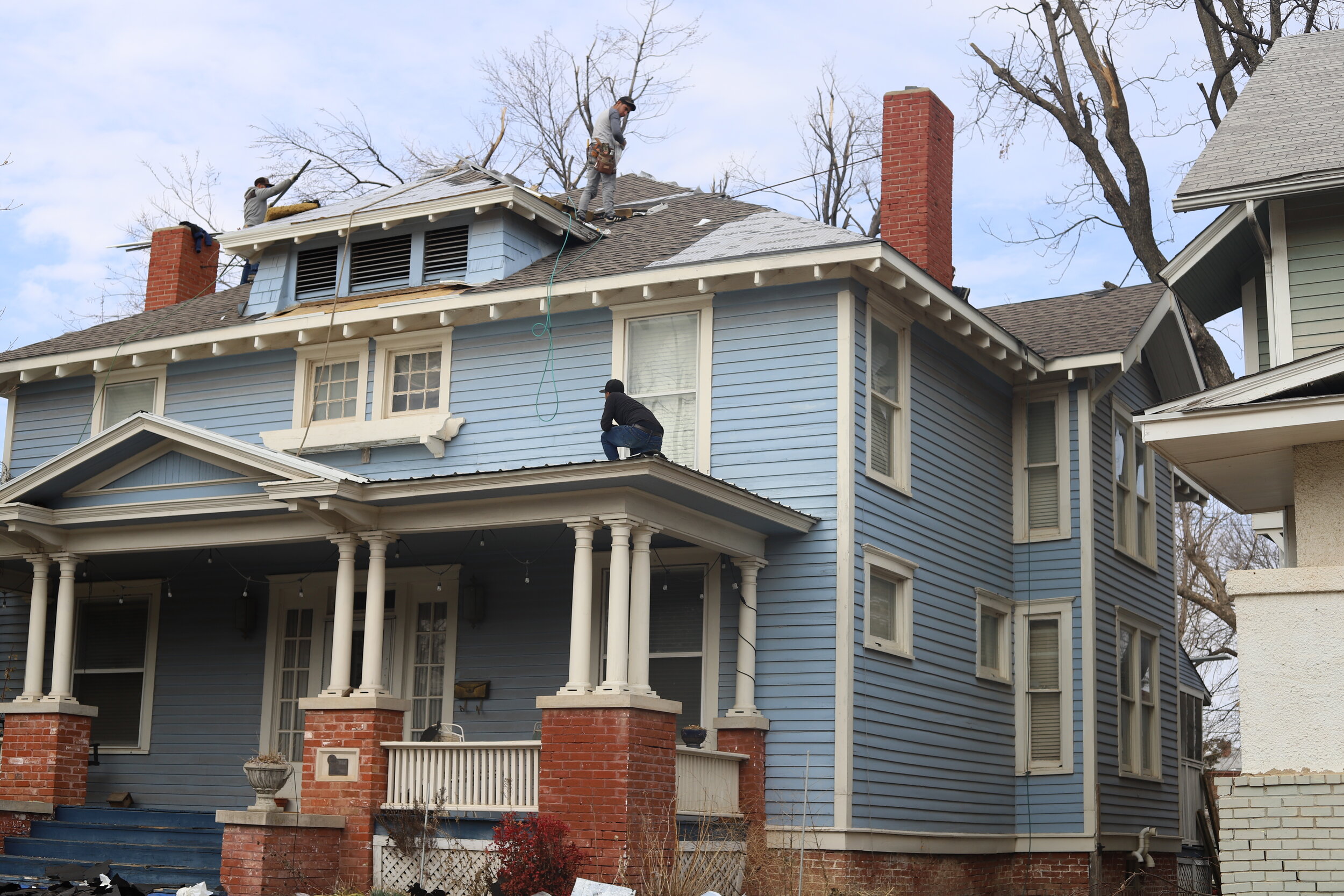Mesta Park GAF Armor Shield
Type of Home: Two Story Craftsman
Year Built: 1910
The Problem
The fall ice storm of 2020 was a community disaster for Oklahoma City. It was awful for homes in Oklahoma City's Mesta Park Historic District. Weighed down by ice, the large old trees fell on power lines, leaving this community without power for over one week. This particular house had several large branches fall on the roof, damage the shingles, break rafters, and damage the decking. Originally this home had wood-shake shingles, but in the last ten years, the previous contractor replaced it with OSB decking and a three-tab shingle. Unfortunately, the three-tab shingles are no match for Oklahoma weather. They were beyond repair from this event and many other wind and hail events over the last ten years. Roofing a historic home needs special attention to detail; the roof, which can also include the gutter and cornice, can be a unique challenge along with the chimney flashing.
The Solution
Our neighbor's solution was to start with a renovation plan that included a 3D rendering of their home. With this, they were able to compare cost and shingle design.
Based on the renovation plan, the neighbor chooses a complete replacement with a GAF roofing system. We would also repair damaged decking, rafters and install new flashings. We recommended GAF Armor Shield for the field shingle and Z Ridge for the hip and roof ridge. GAF Armor Shield has a lifetime warranty when installed by a GAF certified contractor. It is also impact resistant; this protects the home from replacing the roof every time it hails and can also save the homeowner up to 20% on their insurance! We also installed GAF Snow Country Ridge Vent and painted all metal and flashing with GAF matching paint.
The Products Used
Field Shingle: GAF Armor Shield
Ridge Shingle GAF Z Ridge
Underlayment: GAF Deck Armor
Vally Protection: GAF Storm Guard
Exhaust Ventilation: GAF Cobra Snow Country
This Mesta Park roof is now ready to protect this historic home for a lifetime!
About Old Home Rescue
Old Home Rescue is Oklahoma's only renovation company focused on getting old houses RIGHT. We have restored and renovated homes and wood windows in Kansas, Oklahoma, Texas, and Missouri. Our award-winning craftsmanship is recognized nationwide. As a Craftsman Blog Rockstar, we are listed on HGTV's Restore and Revive and host the popular YouTube channel Old Home Rescue.
Old Home Rescue is proud to offer our renovation and repair services in Oklahoma City and surrounding communities like; Norman, Edmond, Shawnee, and Guthrie. We serve all of OKC, including nationally listed historic districts like; Mesta Park, Heritage Hills, Edgemere Park, Crown Heights, Putnam Heights, Gatewood, Lincoln Terrace, Paseo, Shepard, and many more. We work closely with Oklahoma State Historic Preservation Office, Norman, and Oklahoma City Preservation Commissions to ensure all products and services are approved and receive a certificate of appropriateness.
Old Home Rescue products and services will extend the life of your old home. Our renovations use the best products available, like Accoya wood, Sun Windows and Doors, James Hardie Siding and Trim, GAF Roofing, and Sherwin-Williams Paint. We never use vinyl or plastic replacement products.
We encourage you to become our NEIGHBOR by scheduling an appointment with a RENOVATION GUIDE and getting a customized RENOVATION PLAN.







